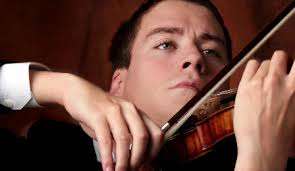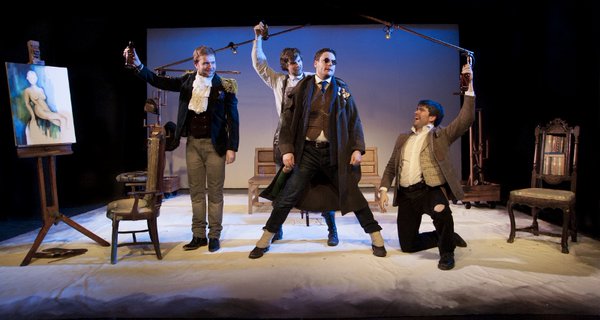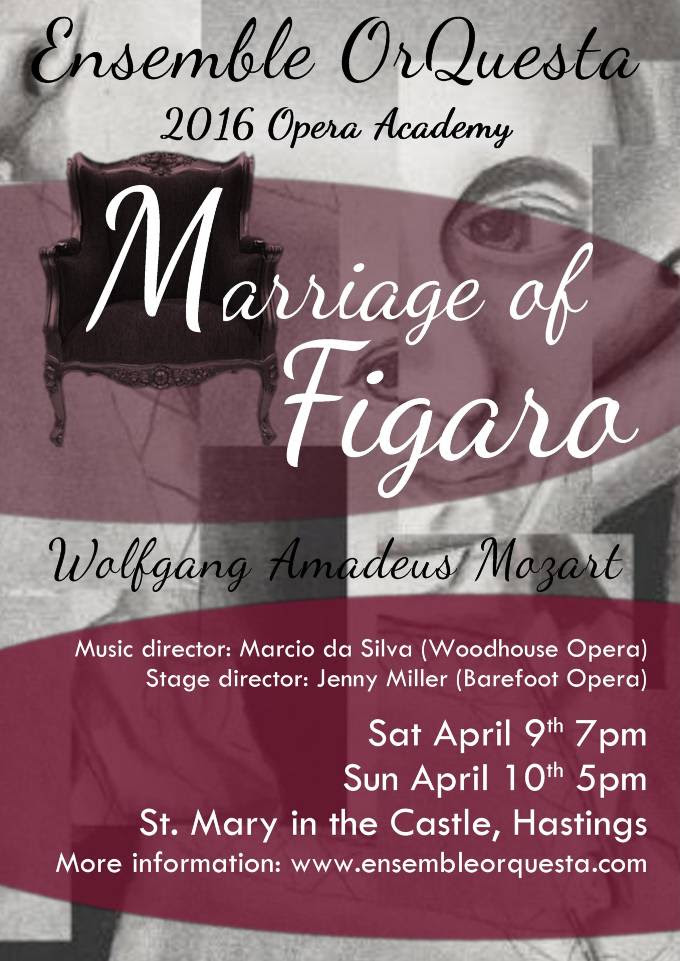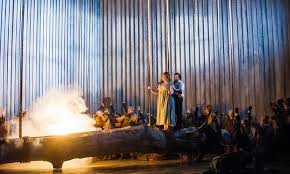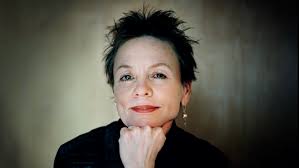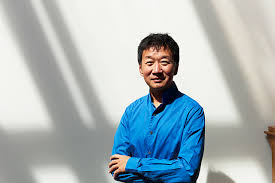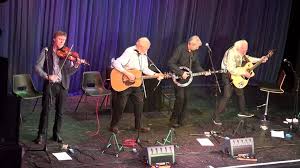Thursday 18 February 2016
A beautiful evening across Bath with a clear sky as the sun went down before we made our way to the Assembly Rooms for the opening performance of this year’s Bath Bach Fest. Ian Bostridge was surely the reason for the full house and he did not disappoint. The platform may have been a little cramped when he appeared, together with the Orchestra of the Age of Enlightenment, but there was nothing cramped about the music-making.
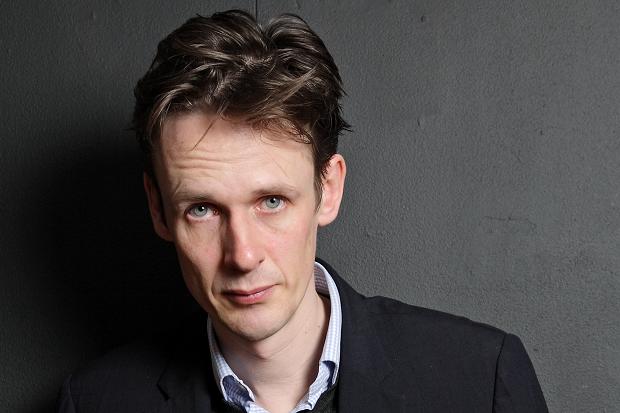
The evening was formed around the vocal items. In the first half we had the calm authority of Telemann’s Das mein Erloserlebt from Cantata TWV 1:873 and the fury of So stehet ein Berg Gottes, before moving to Handel. Ariodante is possibly the greatest of his operas, its endless flow of glorious melody surely unsurpassed even for Handel. Ariodante’s aria Scherza infida combines despair with real pain at the loss of love and Ian Bostridge gave us the complexity of the emotional state while spinning out the most mellifluous of musical lines. Spell-binding – but to break the spell he then sang Love sounds the alarm from Acis and Galatea, a cheeky little number to send us happily into the bar for the interval.
The main vocal work in the second half was Handel’s bravura Silente venti. A strange work liturgically. The Latin text reflects a highly Protestant thinking with its confidence and joy. This is never more obvious than in the florid lines of the concluding Alleluia, though the dramatic interruption of the opening sets the scene for the excitement to come.
I am sorry if this has implied that the OAE did little more than accompany the singer. Far from it. They opened with Telemann’s Overture in F major, following later with Handel’s Concerto Grosso Op6 No3 and the evening concluded with the First Suite from Handel’s Water Music. In these, natural horn players Roger Montgomery and Martin Lawrence were particularly impressive, but the bite and energy at all times meant that there was never a moment one could think of losing interest. This was a captivating occasion and has set a very high standard for the rest of the weekend.
Friday 19 February 2016
Bojan Cicic at the Guildhall
Less than forty-eight hours before this lunchtime concert Bojan Cicic was blissfully unaware that he would be playing but the sudden indisposition of Rachel Podger meant that a replacement was needed and he just happened to be in Bath for the evening concert.
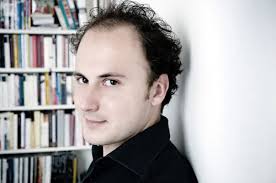
Apart from a minor change to the programme, hardly anyone would have guessed that he had not been prepared – like most soloists – for many months ahead.
He spoke to us about the regrettable change because of Rachel’s illness and also of his particular approach to the works he was to perform. Unlike keyboard players, there are few baroque works for solo performer, which means that there are very few occasions when – as a baroque violinist – he is actually alone. And this was one such occasion. He also told us, later, why he has the score with him. Though he knows the works from memory and has played them as such, he now works with the facsimile of the original scores, with all their smudges and strange markings, which give a very personal relationship with the composer. He feels that it is easier to pick up the nuances of the work from the original where it is available.
This was very obvious from his performance. He opened with the Sonata No 1 in G minor, the Adagio having a certain astringency to it and the Fuga a deliberate almost resolute pace. The graceful Siciliana still retained a melancholic feel and even the final Presto – for all its attack and brilliance – had a deceptively dark side to it.
After this the Partita No3 seemed almost too easy on the ear with its familiar opening Preludio and Gavotte. The final Gigue had a biting intensity to its rhythms which recalled the earlier sonata but without the darker edges.
He then returned to the Partita No2 in D minor with its jumpy staccato rhythms in the Corrente and yearning, wandering Sarabanda. If the Giga seems brighter with its energetic fluency it is only a foil before the magnificence of the concluding Ciaconna. This is as good as it gets in Bach – which is to say it is surely as near perfection as we are ever likely to encounter. It can easily be set alongside the Art of Fugue as a work of stunning virtuosity yet one which far exceeds the purely technical.
It was superb and received as such by a full house – and in five hours’ time Bojan Cicic plays again with Florilegium!
Friday 19 February 2016
Florilegium had considerable success with their recording of Bach’s Brandenburg Concertos recently and they brought three of them to the Assembly Rooms on Friday evening. In between they played works by Vivaldi and Telemann. Though the former wrote 25 concerti for two violins there is only one extant concerto for two flutes and it is this which we heard. It is a friendly little work in C major and has all the innocence and joy one might expect. It also has a splendid bass line for the solo cello, which sang with warm confidence throughout.
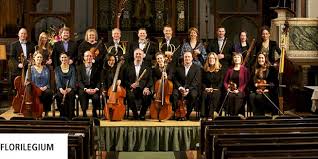
After the interval we heard movements from Telemann’s Musique de Table. I suspect these pieces are more fun to play than to sit through, though the instrumentation frequently sounded denser and more complex that the eight musicians would appear to be able to provide. There was a playfully brisk Gigue and a gentle Loure but it was very much a case that less might have been more in terms of enjoyment.
The three Brandenburgs opened with No3 which is for strings alone. The use of period instruments and gut strings makes for a softer, more intimate sound. There was also a real sense of individual players passing the lead along the line as the score develops. It was true ensemble rather than a directed work. Bojan Cicic, who had covered the lunchtime concert so successfully, played throughout the evening and provided the top line where necessary for the Bach. He even improvised the two linking bars of the 3rd Concerto. I hope he had some time to relax after a day which has proved so rewarding to those of us listening.
The fifth concerto brought Ashley Solomon to the stage for the solo flute, and gave Terence Charlston a chance to shine from the harpsichord. Somewhat hidden behind the strings for most of the evening the long solo passage at the end of the first movement was magnificently played with a genuinely improvisatory feel to it. Had this been a jazz event we would have applauded enthusiastically as he ended!
The forth concerto brought the evening to a close, with two recorders joining the strings. Crisp and fluid throughout, with no hint of sentimentality, the ensemble was, as throughout the evening, exemplary and highly enjoyable.
Saturday 20 February 2016
Mahan Esfahani is certainly one of the finest exponents of the harpsichord and a champion of its particular delights. As such it was disconcerting to learn when he spoke to us that he was actually performing the Bach French suites for the first time in public. Not that there was any doubt as to his technical excellence or his commitment, just that he had come to realise that in order to play ‘lighter’ music one needed more maturity, which he hoped he now had!

He opened with three earlier works from the Fitzwilliam Virginal Book by Peter Philips, Giles and Richard Farnaby. The highly florid textures of Philips’ Pavan gave way to the more rooted but no less extrovert Farmer’s Pavan by Giles Farnaby and the genuine dance textures of Nobody’s Gigue from Richard.
We were then into three of Bach’s French suites opening with No4 in E flat major. Conversations with his Czech teacher had hinted that these were love letters to Bach’s wife, which Mahan rejected at the time but has come to see as closer to the truth than may at first be obvious. There is also the possibility that the suites were written for clavichord, a far more intimate instrument altogether. Taking both into consideration he produced beautifully crafted phrasing and an intimacy of touch which was compelling throughout. If the weight of the final Gigue brought a more virile enthusiasm it could not out-weight what had gone before.
For the 6th French Suite he followed an early copy which added a Prelude, taken from the Well-Tempered Clavier, before launching into the standard seven movements. The Sarabande has a gentle introspection which offsets the folk-like quality of the later movements.
After the interval we heard two pieces from Couperin’s Pieces de Clavecin-Les Vieux Seigneurs and Les Jeunes Seigneurs. If the older men are cynical there is a glorious sense of look at us how we sparkle from the younger fops.
The final French Suite was No5 with its familiar but very welcome concluding Gigue given here with all the enthusiasm and clarity which the whole performance had shown.
A bravura encore by Rameau – accelerating to the point where it was impossible to believe he actually had enough fingers to play all the notes – brought the concert to a close, sending us out ready for lunch.
Saturday 20 February 2016
Academy of Ancient Music, Bath Abbey
As is traditional, the final performance of the festival was in Bath Abbey and brought together themes we had come to appreciate over the last three days. Opening with Bach’s First Brandenburg concerto, the Academy of Ancient Music demonstrated a very different approach to the pieces. Richard Egarr shaped and directed the score from the harpsichord, conducting more than he played and ensuring the whole was very much under his control. If the horns were a little wild at the start they soon came into focus and the whole was well balanced even if the acoustic of the Abbey is not as conducive to chamber music as the Assembly Rooms.
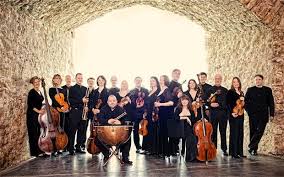
Vivaldi’s motet In turbato mare irato is a barn-storming virtuoso piece which held no fears for Mary Bevan who threw off its coloratura with aplomb. After a brief pause – it is always difficult to have a real interval in the Abbey – she returned to sing Bach’s Wedding Cantata. If this was less showy than the Vivaldi it had the benefit of allowing the oboe and cello soloists to demonstrate their prowess without ever undermining the soprano line.
Two shorter works brought the evening to a close. Vivaldi’s brief Concerto alla Rustica was almost over before it started and proved a curtain-raiser for his Concerto for violin, two oboes and two horns. The hero of the hour was definitely first violin Pavlo Beznosiuk, who was required not only to pretend to be a Ruritanian peasant fiddler but then turn into Paganini for the final eighty solo bars. It was a tour-de-force and brought the festival to a lively conclusion – until we all meet again next year.

